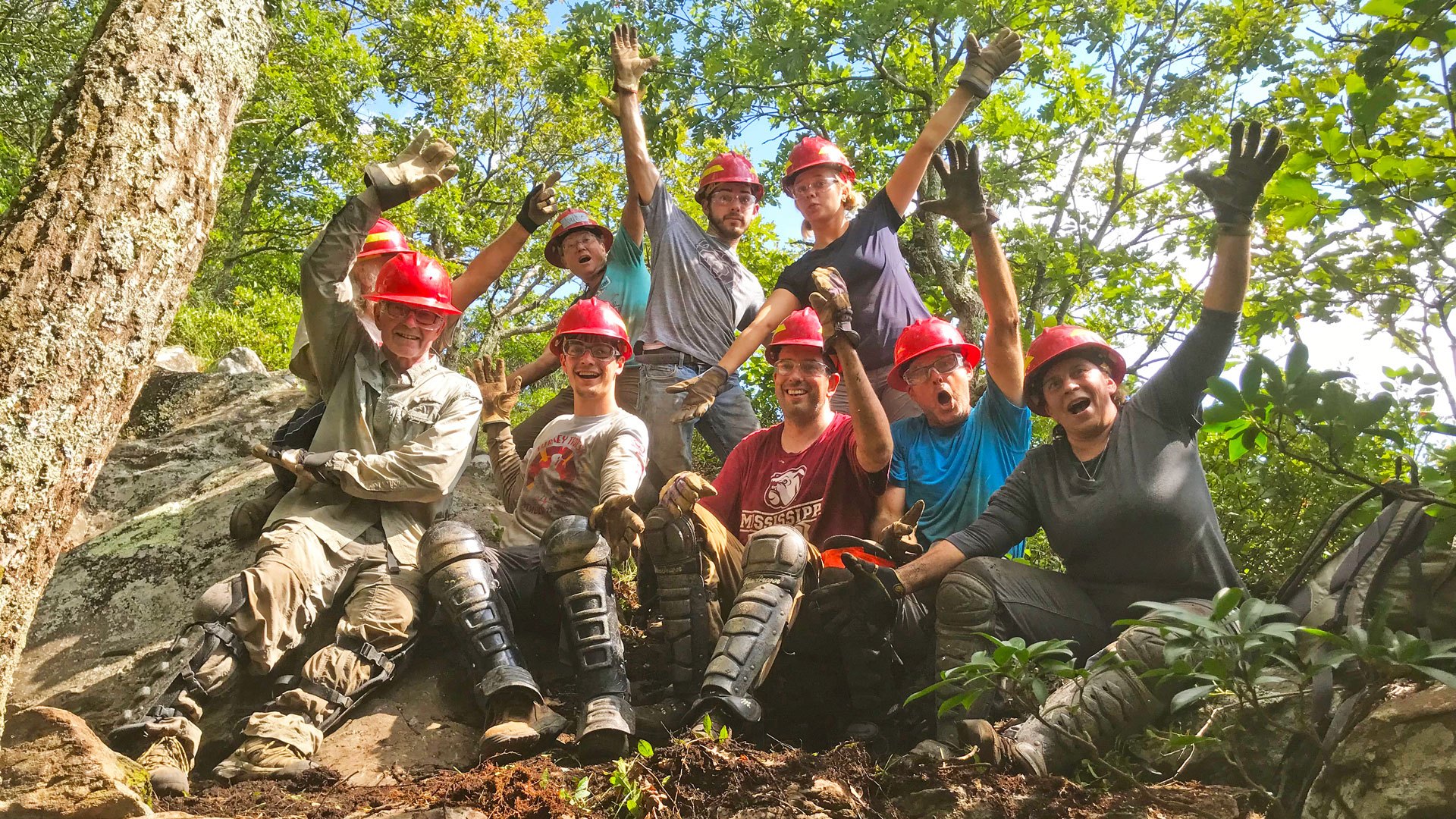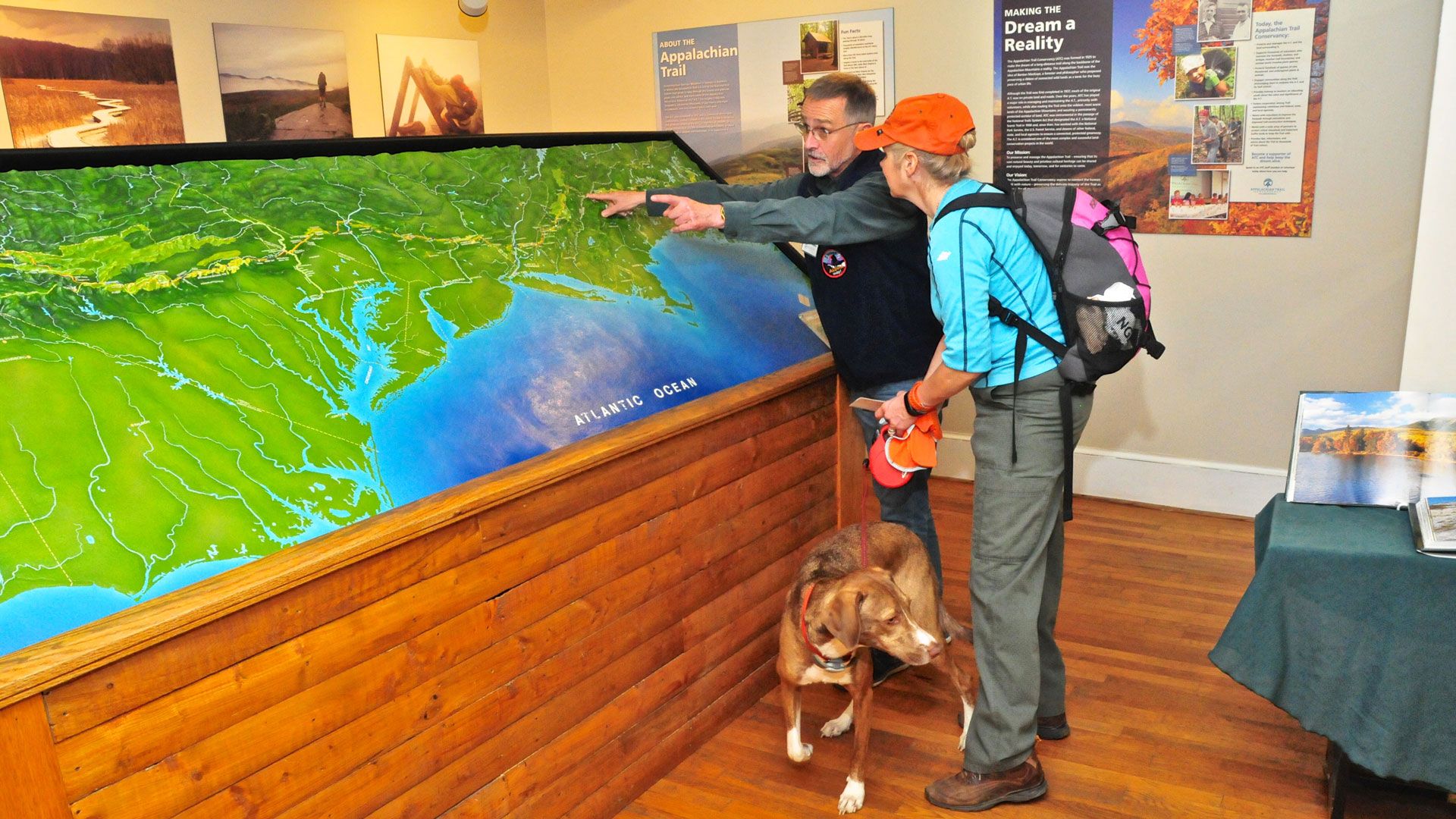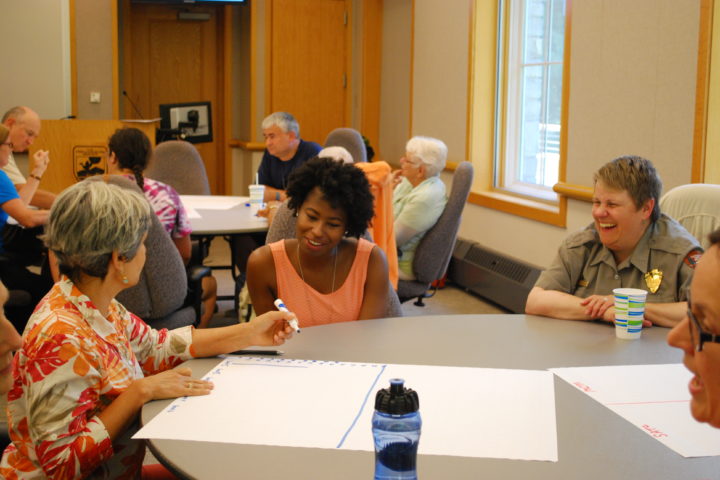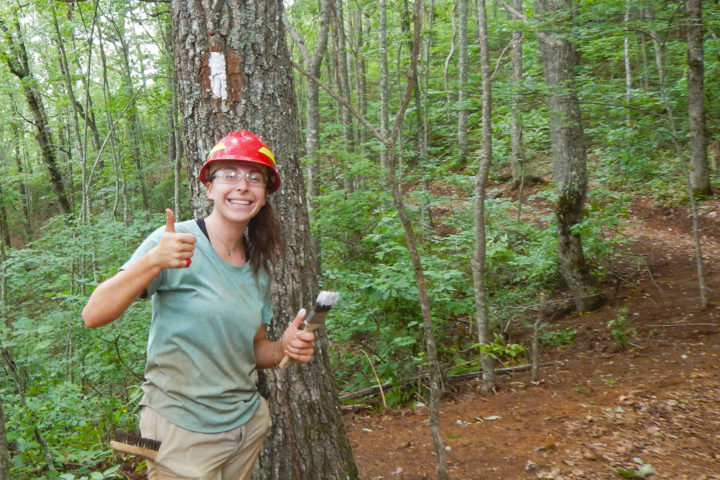Decoding the Appalachian Trail: Volunteer Edition
The Appalachian Trail (A.T.) is one long (almost 2,200-mile) testament to how the work of ordinary people can make a difference. Ever since 1900 when A.T.-originator Benton MacKaye looked out at the treetops on Stratton Mountain and wondered about creating a trail that ran all the way to the southern Appalachians, people have made and maintained the A.T.

Today, over a century since the Trail was built, the A.T. still exists largely thanks to the work of dedicated volunteers. Some volunteers do physical Trail maintenance work, while some contribute their creative talents by working as volunteer photographers, writers, or videographers. Still other volunteers work behind the scenes within the organization to help with event planning, data entry, and more. The A.T. literally would not exist without volunteers. So, if you’ve ever thought about volunteering to give back to the Trail, but weren’t sure where to start, we’ve got you!
In this blog post, we’re decoding A.T. volunteering by defining some common terms so everyone can feel welcome. There is a place for you — and all your unique skills — as an A.T. volunteer.
Decoding A.T. Volunteer Terms
Getting Started as an A.T. Volunteer
A.T. Volunteer Engagement Platform: The A.T. Volunteer Engagement Platform (VEP) found at appalachiantrail.org/waystovolunteer lists upcoming volunteer opportunities that Appalachian Trail partner organizations are hosting. On the VEP, you can find a variety of volunteer work trips, positions, and trainings. You can also filter results by location, time, and interests. It is a great place for anyone interested in volunteering to start when they are seeking a way to volunteer on the Appalachian Trail. Another great way to learn about upcoming volunteer opportunities is to sign-up for our monthly email that rounds up all volunteer events happening in your region:
Sign Up for Volunteer Opportunity Emails
Visitor Centers: ATC visitor centers serve as hubs for local, regional, and national conservation and recreation information and connect visitors to ATC stewardship opportunities. Visitor center volunteers work with staff to educate and inform visitors about the Trail, the work of the ATC, and the communities where each visitor center is located. Visitor center volunteers help inspire visitors to become stewards of the A.T.
Volunteers on the Trail
Essential Trail Maintenance: To keep the Trail healthy, volunteers perform Essential Trail Maintenance tasks like removing overgrown vegetation and fallen trees on the path, or mitigating erosion that washes away the surface of the path.
Trail Crew: Trail crews are groups of people who gather to complete larger tasks that are essential to the Trail. There are several Trail crews hosted along the AT. When you join a Trail crew, you typically camp and work out on the Trail for a few days to complete specific trail care goals.
Personal Protective Equipment: Personal Protective Equipment, also known as PPE, are items that help protect volunteers from injury while they work. Each Job Hazard Analysis lists the PPE required for specific tasks. For example, gloves, hard hats, and safety glasses are a great start to the PPE items that people need to wear when working with hand tools.
A.T. Maintaining Clubs: A.T. Maintaining Clubs partner with the Appalachian Trail Conservancy in coordinating volunteers and provide on-the-ground knowledge and experience on their local section of Trail. Many A.T. Maintaining Clubs vary in size, form, and function. Clubs may care for a section of Trail for a few miles or a few hundred miles! Click here to find your local Trail Maintaining Club.
Trail Tread: The path the soles of your shoes touch and the surrounding area on the ground is considered the trail tread. The tread of the Appalachian Trail is typically two feet wide.
Trail Relocation: A trail relocation is typically performed by a trail crew and provides visitors with a more sustainable footpath. For instance, when trails were first being built to bring visitors to the tops of mountains, planning for construction involved finding the quickest and fastest route to the top, which usually meant straight up the side of the mountain with extreme gains in elevation over short periods of time. Over time, it became apparent that these steep trails quickly eroded, damaging the surrounding environment and creating a poor user experience. Therefore, sustainable trails are now planned and built to gently climb the contours of a mountain to allow for smooth increases in elevation gain.
Trail Restoration: When a trail has been damaged, trail crews will work to create or modify existing structures that enable the trail to provide a sustainable path for visitors.
Boundary Work: The Appalachian Trail is more than just its two-foot wide trail tread. What makes the A.T. hiking experience so unique and beautiful is the corridor of public lands that the Trail traverses. Maintaining the boundaries of this land helps to protect it from encroachments such as motorized vehicles and timber theft. Volunteers doing boundary work might survey, inspect, and collect data while walking the property line. Maintenance means clearing a line of sight, re-painting existing blazes, and posting signs. Boundary monitoring is a great way to see the Trail and surrounding landscapes in a new way.
Drainage: Drainage is a trail maintenance feature that exists within the tread that drains water off of the Trail. Some of the best drainage features are difficult to identify in the attempts to keep the trail looking as natural as possible while also providing visitors with a durable and sustainable path to walk on.
Staircase: When water rushes down steep inclines, it tends to remove the dirt and rocks that it passes over, eroding the trail tread. However, there are instances where a steep climb is necessary. To help visitors with traversing these steep inclines and to prevent water from damaging the trail tread, trail crews often build staircases made of rock or wood.
Brushing: Brushing describes the act of clearing a trail’s corridor from overgrown vegetation to a specific dimension. The Appalachian Trail Conservancy Fieldwork Handbook recommends a corridor that is cleared eight feet high and four feet wide. Click here to learn more about brushing a trail.
Grubbing: Grubbing is a term used to describe the process of digging in the dirt. Trail workers “grub” for a variety of reasons. They may be removing unwanted material from drains, for example, by digging out vegetative material left by flowing water, or they may grub to build a new section of sidehill trail by removing some vegetation and topsoil, before digging into and creating a “bench” of mineral soil that will host the footpath. Click here to learn more about the tools typically used for grubbing.
Connect with Others
Regional Partnership Committee: Regional Partnership Committee (RPC) meetings are held twice annually and bring together the A.T. clubs and other area partners who help to care for the Trail in each of the four A.T. regions. RPCs serve as the inter-communication link between partners, specifically providing volunteers with the opportunity to share their local knowledge, perspective, and voice within the larger A.T. management.
Next Generation Advisory Council: NextGen is a volunteer group of diverse leaders aged 18-30 that supports the ATC in carrying out its mission to protect, manage, and advocate for the Trail.
Stewardship Council: The ATC Stewardship Council is made up of volunteers with specific knowledge and expertise who advise ATC staff and the Board of Directors on policy and programs related to the conservation and stewardship of the A.T. and surrounding lands.

Volunteering on the Appalachian Trail is a great way to spend time in nature, connect with others, and give back to the Trail. Now that you can talk the talk, you can walk the walk by finding a volunteer opportunity near you!
Discover More

Learn More
About Volunteering
Learn more about volunteering on the Appalachian Trail and begin a volunteer journey that matches your skills, interest, and expectations.

From maintenance of the footpath and its facilities to greeting guests
Volunteer Opportunities
The Appalachian Trail (A.T.) would not exist without volunteers.

Read More
First-Time Volunteer Stories
Volunteers share their experiences maintaining the Appalachian Trail (A.T.) and its boundary for the first time.





